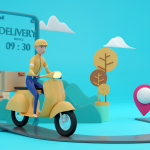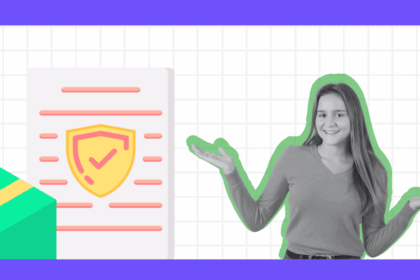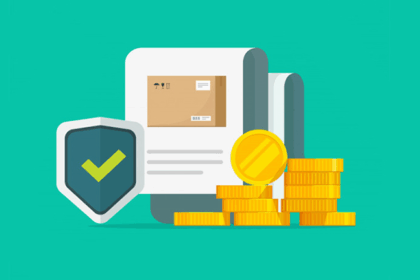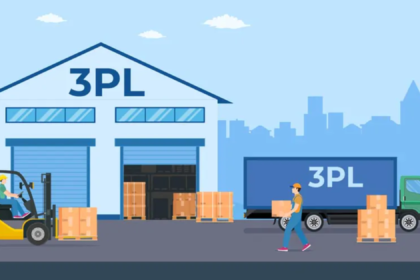Let’s be real – getting something delivered sounds simple. But for businesses, the last stretch is where it all gets complicated
A package can cross countries without a problem, but the moment it hits the customer’s city? That’s where things get tricky. Drivers face traffic, delays, missed deliveries, tight schedules, and confusing addresses.
That’s why many businesses are turning to 3PL last-mile delivery. These third-party logistics providers step in to handle the most chaotic part of the process — from route planning and tracking to handling returns.
And this isn’t just a growing trend. The global 3PL market is set to hit $1.75 trillion by 2026. In North America alone, over 12% of logistics is already handled this way.
In this article, we’ll break down what 3PL last-mile delivery really means, why it matters, and how it can help you cut costs and keep customers happy.
What is 3PL last-mile Delivery?
3PL last-mile delivery is a service where a third-party logistics provider manages the final step of the delivery process and moves orders from a warehouse to the customer’s doorstep.
A 3PL provider usually stores products in nearby warehouses. When an order comes in, they pick, pack, and deliver it. They also manage drivers, plan routes, and keep customers updated with tracking info.
The last-mile often brings delays because of traffic, wrong addresses, or tight time slots. Customers expect fast, reliable updates. And believe it or not, this part accounts for more than 50% of the total shipping cost.
That’s why a lot of businesses bring in 3PL providers. It saves time, lowers costs, and helps keep customers happy without having to manage the delivery process.
Key Components of 3PL Last-Mile Delivery
The key components of 3PL last-mile delivery include route planning, resource allocation, real-time tracking, and returns management. These steps make the final part of the delivery work by getting packages to the right place on time and without extra costs.
Let’s walk through what each of these actually looks like in practice.
Route Planning
Route planning is the process of figuring out the most efficient way to deliver packages across multiple destinations. It sounds simple, but it’s a game-changer. A good delivery route isn’t just the shortest path.
It has to account for traffic, delivery windows, high-priority customers, and even driver capacity. That’s why most 3PLs rely on smart delivery software that can quickly calculate the best route in real time.
Resource Allocation
Resource allocation means assigning the right drivers and vehicles to the right routes and packages. You’ve got drivers, vehicles, time slots, and customer needs — and everything needs to line up perfectly.
A 3PL provider takes this off your plate by using systems to automatically match routes with available resources. It keeps things running smoothly and avoids last-minute scrambles. When this step is handled well, the rest of the delivery day feels a lot more manageable.
Real-Time Tracking
Real-time tracking is the ability to monitor delivery vehicles and orders as they move through the last mile. This is what gives both your team and your customers peace of mind.
You can see where your drivers are, spot delays early, and quickly respond if something goes wrong. Customers also get updates, which helps build trust. With the right 3PL partner, tracking isn’t something you chase down — it’s built right in.
Returns Management
Returns management in 3PL last-mile delivery is the process of handling order returns in a smooth, efficient way. For e-commerce businesses, especially, returns are part of the deal. A strong 3PL setup includes a plan for pickups, processing, and communication with the customer.
It’s all about making the return feel just as easy and reliable as the delivery. A customer-friendly return process doesn’t just solve problems, it strengthens the relationship.
How Does 3PL Last-Mile Delivery Work?
3PL last-mile delivery works by handing over the final part of the delivery journey to a third-party logistics provider. They take care of everything from route planning to customer delivery.
Here’s how the process typically works from start to finish.
Order Is Handed Off to the 3PL
Once an order is ready to go, the business passes it to the 3PL provider. It includes the customer’s address, delivery time preference, product size, and any special instructions.
At this point, you’re no longer juggling the details. The 3PL provider will do the work for you and manage the delivery from here on out.
Route Planning and Driver Assignment
The first thing the 3PL provider does is build efficient delivery routes. Their software looks at all the day’s deliveries and finds the smartest path. They also take traffic, zones, time windows, and even high-priority customers in account.
Then comes the driver assignment. Based on those routes, the system matches drivers and vehicles to each job. It helps avoid delays and keeps operations running smoothly.
For you, it means less time spent figuring things out manually and more focus on growing your business.
Real-Time Tracking and Updates
As soon as the driver is assigned, the package tracking starts. You and your customer can both see where the package is in real time. If something’s delayed, the system updates automatically.
This kind of visibility builds trust. It also cuts down on “Where’s my order?” calls, because the customer already knows what’s happening.
Some systems even offer ETA notifications so your customer doesn’t have to sit around waiting all day.
Delivery Confirmation and Returns Handling
When the driver completes the delivery, they may snap a photo, collect a digital signature, or send a confirmation. That proof gives peace of mind, especially if the customer isn’t home.
And if something needs to be returned? The same 3PL provider can schedule a pickup, log it in their system, and make sure it’s handled smoothly.
Challenges Faced by 3PL Providers in Last-Mile Delivery
If you’ve ever managed 3PL last-mile delivery or relied on someone else to do it, you know it doesn’t always go smoothly. For 3PL providers, it’s where the pressure really starts building up.
Let’s look at a few of the everyday challenges that make this final step so demanding.
High Delivery Costs
One of the first things that catches people off guard is just how expensive the last-mile can be. It often takes up more than half of the total logistics cost. Because deliveries aren’t going to one location. Drivers are making several stops, across different zones on a tight clock. That means more time, more fuel, and more labor.
Customers expect fast shipping, but most don’t want to pay extra for it. They want free same-day delivery, and that expectation puts the cost back on the business or the 3PL. When you factor in returns, late orders, and failed deliveries, the costs add up even faster.
Manual Processes Slow Everything Down
Many 3PL providers still rely on a lot of manual work, like spreadsheets, calls, texts, and physical paperwork. That might be fine when the order volume is low. But during peak hours or high-demand seasons, it quickly turns into a bottleneck.
When the systems can’t keep up, orders fall behind, returns pile up, and customer support starts getting flooded. It’s not just about delivering packages, it’s about managing moving parts that need to work together. Without smart tools and visibility, even experienced teams lose control.
Routing Challenges
A good route makes all the difference. But if you’re still planning routes manually, you’re already behind. It takes too long and doesn’t adapt in real time. Traffic, weather, and last-minute changes all of these factors affect the plan completely.
One wrong turn or an outdated map slows you down, burns more fuel, and keeps your customers waiting. In 3PL last-mile delivery, a single delay can throw off the whole day’s schedule.
Lack of Real-Time Visibility
Here’s something that should be simple but often isn’t – knowing where a package is in real time. Many 3PLs still operate without solid tracking systems, which means that both the business and the customer are left in the dark.
And when you can’t see what’s happening, you can’t respond. If a driver’s running behind or a package is sitting in the wrong place, there’s no way to step in quickly. That leads to missed deliveries, wasted time, and frustrated calls from customers who feel ignored.
Visibility isn’t just a bonus anymore – it’s the baseline. If your system can’t provide real-time updates, it creates friction that’s hard to fix.
Late Deliveries
Most customers might not say it out loud, but they feel it – if a delivery is late, they might think twice about ordering again.
And the data backs that up. A late delivery doesn’t just cause a small delay. It chips away at the trust you’ve worked hard to build. Over half of bulk orders are delayed. More than 60 percent of customers say they’re unlikely to reorder after a missed window.
This isn’t just a logistics issue, it’s a brand issue. For 3PL providers, it means that one late package isn’t just a late package. It could be the last chance a brand gets with that customer.
Poor Customer Experience
A lot of providers focus on getting the package delivered. But that’s not the full experience.
Customers want to know where their orders are. They want notifications when it’s close. They want the ability to reschedule or make changes if something comes up. And if they need to return something, they want it to be just as easy as the delivery itself.
The customer notices when a 3PL doesn’t offer that level of communication and control. Even if the delivery is technically on time, it can still feel off. The experience feels disconnected. And in today’s world, that’s all it takes to lose loyalty.
Strategies for Optimizing Last-Mile Delivery
ptimizing last-mile delivery is important for businesses to meet customer expectations. However, last-mile delivery is unpredictable and costly. And, if you’re not careful, the quickest way to lose a customer’s trust.
Therefore, here are the 5 strategies to optimize last-mile delivery:
Make Route Planning Smarter
When routes are planned well, everything else falls into place. Smart routing tools look at real-time traffic, weather, delivery windows, and vehicle capacity. Ultimately, it takes pressure off your drivers and helps avoid the chaos that comes with outdated or inflexible planning.
Efficient routes also reduce fuel costs, shorten delivery times, and improve the chances of first-attempt success. The fewer variables your drivers have to manage manually, the better the outcome for your customers.
Manage the Full Experience
Once an order leaves your facility, most teams lose visibility. And when something goes wrong, they find out only after the customer does. That’s where Delivery Experience Management Software by LateShipment.com comes in.
It gives you real-time oversight across all your carriers, flags delivery issues early, and sends proactive updates to customers. This improves your customer experience, cutting down on support tickets, and helping your team take action before a delay turns into a complaint.
Give Customers More Control
Delivery flexibility isn’t just a nice-to-have anymore. If customers can choose when their package arrives or reroute it easily, failed deliveries drop significantly. Control leads to fewer missed deliveries, whether it’s offering delivery windows, locker pickups, or allowing simple changes through SMS or email.
As a result, you will have fewer redeliveries and more satisfied customers.
Track Deliveries in Real Time
You can’t fix what you can’t see. Real-time tracking gives your team the ability to respond before a missed delivery becomes a support ticket. It’s also what customers expect, they want to know where their order is and how much time it will take.
Good visibility tools don’t just help your customers feel informed. But they give your ops team the confidence to adjust quickly for unexpected situations.
Let Your Data Work for You
You’re already collecting data, so put it to work and make it useful. Look at where delays are happening most, which delivery windows work best, and what zones are consistently underperforming. A few smart changes based on real insights can tighten up your entire operation.
Case Studies of Successful 3PL Last-Mile Delivery
When 3PL last-mile delivery works well, packages arrive on time, customers stay happy, and problems get handled quickly. Here are three 3PL companies that stepped up during high-pressure situations and made last-mile delivery work.
Case Study 1: GEODIS
GEODIS helped a large retailer during the holiday rush. They added more drivers and improved delivery routes. Their support kept 98% of orders on time. It helped the retailer avoid delays and keep customers happy.
Case Study 2: Massood Logistics
A company’s warehouse shut down during COVID-19. Massood Logistics stepped in and acted fast. They moved the products to their own facility and started shipping the next day. Their quick response helped prevent major delivery delays.
Case Study 3: Traba
A clothing company in Texas had 8,000 orders stuck in the backlog. Traba stepped in and provided extra warehouse staff within 24 hours. The company cleared all orders in just two weeks. They kept a 100% order fill rate on schedule without missing a single one.
Deliver the Experience Customers Deserve
Getting 3PL last-mile delivery right takes more than fast shipping. It requires strong coordination, clear communication, and quick problem-solving. Companies that do this well keep deliveries on time and customers happy. They don’t just deliver – they manage the entire experience.
But doing this at scale brings a new set of challenges. Teams often work with limited visibility and delayed updates. Small issues can turn into bigger ones before anyone notices. Without the right tools, it’s hard to stay in control.
That’s where Delivery Experience Management Software by LateShipment.com makes a difference. It brings all your delivery data into one place, tracks delays in real time, and alerts your team early. It also keeps customers updated automatically, without adding extra work.
Want to see the platform in action? Take a tour today and streamline your delivery experience journey.








